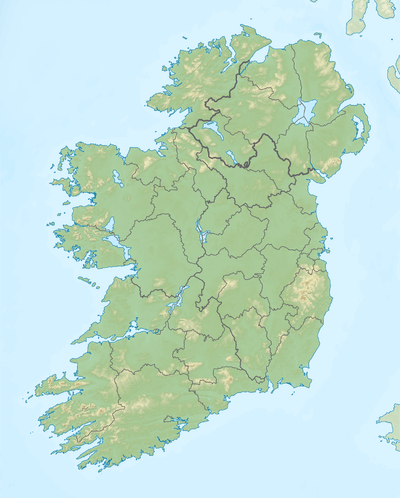Scullabogue Barn massacre
| Scullabogue Massacre | |
|---|---|
| Location | Scullabogue, Newbawn, County Wexford, Ireland |
| Coordinates | 52°21′33″N 6°46′21″W / 52.359291°N 6.772421°WCoordinates: 52°21′33″N 6°46′21″W / 52.359291°N 6.772421°W |
| Date | 5 June 1798 |
Attack type | Burning, shooting |
| Deaths | 100-200 noncombatant men, women and children |
Non-fatal injuries | 2 |
| Perpetrator | Irish republicans |

The Scullabogue massacre was an atrocity committed in Scullabogue, near Newbawn, County Wexford, Ireland on 5 June 1798, during the 1798 rebellion when insurgents massacred up to 200[1] noncombatant men, women and children, most of whom were Protestant, held prisoner in a barn which was then set alight.[2] A participant, Thomas Cloney, put the death count at 100.[3]
Background
A farm and out-buildings in the townland of Scullabogue (also spelled Scullaboge; Irish: Scolbóg) were used as a staging post for rebel forces before the 1798 Battle of New Ross. The main camp for the rebels was located a mile from Scullabogue on top of Carrigbyrne Hill. The rebels had rounded perceived loyalists of both sexes and all ages who were mainly held in a barn to prevent their supplying the military with intelligence of rebel movements. At dawn on June 5, the bulk of the rebel army attacked the nearby town of New Ross leaving behind a small number of guards in charge of the captives. The battle at New Ross was a heavy defeat for the rebels who lost almost 3,000 men. Survivors who had fled the fighting had reached Scullabogue with news of the terrible losses while the battle still raged violently.[4]
Massacre
_p162_Massacre_at_Scullabogue.jpg)
Thomas Cloney, a rebel commander present at the Battle of New Ross, reported, "The wretches who burned Scullabogue Barn did not at least profane the sacred name of justice by alleging that they were offering her a propitiatory sacrifice. The highly criminal and atrocious immolation of the victims at Scullabogue was, by no means, premeditated by the guard left in charge of the prisoners; it was excited and promoted by the cowardly ruffians who ran away from the Ross battle, and conveyed the intelligence (which was too true) that several wounded men had been burned in a house in Ross by the military." The news had incensed certain elements of the rebel force stationed at Scullabogue, who joined with the deserters in agitating for revenge against the prisoners. The prisoners' guards twice prevented the gathering mob from harming them but eventually gave in to the crowd by allowing the executions by musket-shot of over a dozen particularly hated individuals. However, all semblance of control was quickly lost and the barn was soon torched. People trying to escape the barn were shot, stabbed and beaten to death or forced back into the flames.
Only two men are thought to have escaped the flames of Scullabogue Barn. One was named Richard Grandy, and the other was Loftus Frizzel. At least twelve men alleged to have taken part in the massacre were executed after the rebellion was suppressed. Although the massacre has been regarded as sectarian in origin, up to 20 of the victims were Catholic.
Memorials
There is a Scullabogue Memorial stone in the graveyard of Old Ross Church of Ireland church. The theme is one of reconciliation. The Scullabogue Barn itself was controversially knocked down and covered over by the current proprietor in the 1990s. There is, however, no state memorial to the people who were massacred during this incident.
See also
References
- ↑ Lydon, James F. The making of Ireland: from ancient times to the present pg 274
- ↑ Dunne, Tom; Rebellions: Memoir, Memory and 1798. The Lilliput Press, 2004. ISBN 978-1-84351-039-0
- ↑ A personal narrative of Those Transactions in the County Wexford, in which the Author was engaged, during the awful period of 1798 - Thomas Cloney et al. (James Mullen Pub. Dublin 1832) p. 220
- ↑ John Mitchel: The History of Ireland from the Treaty of Limerick. Glasgow, Cameron & Ferguson, 1859. pp. 293–294